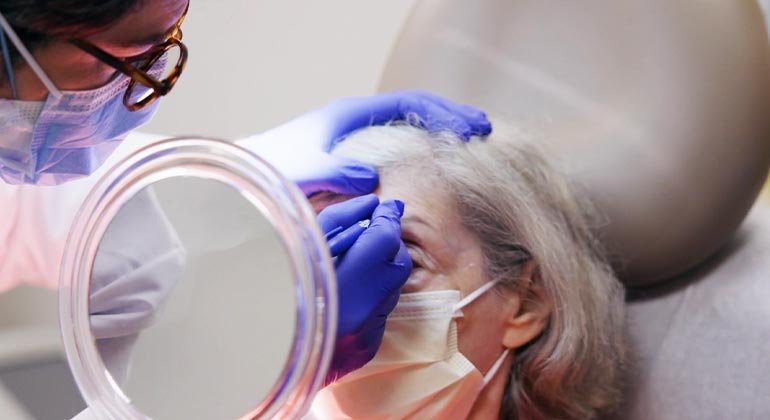Skin Cancer

Cancer is a disease where abnormal cells grow out of control. Think of it as cells gone wild. Skin cancer happens when cancer starts in the skin. It is the most common type of cancer in the United States, according to the Centers for Disease Control and Prevention. Skin cancer is most likely to affect Caucasians, men more than woman. However, despite what you may think Latinos and African Americans can and do get skin cancer.
There are three main types of skin cancer. Two of them—basal cell and squamous cell—are highly treatable when caught early. The third, melanoma, is more dangerous. Mount Sinai has plenty of experience diagnosing and treating all of these types of skin cancer. We offer the latest therapies and are actively conducting research to improve care. The Kimberly and Eric J. Waldman Melanoma and Skin Cancer Center can provide more information on the treatments and clinical trials for the different types of skin cancer.
Signs of skin cancer are changes in the size, shape, or color of a mole, pimple, or other skin lesion, or a sore that does not heal. Basal cells often appears as a small red or pink growth, often appearing like a pimple that does not go away. Squamous cell is usually a reddish lump with a rough surface. Melanomas are often asymmetrical, have irregular borders, uneven brownish color, are larger than the size of a pea, and are growing or changing.
Risk factors for skin cancer are fair skin, a lot of sun (or tanning bed) exposure, a history of sunburns, and a personal or family history of skin cancer. People with a lot of moles or reddish hair are at increased risk as are those with a weakened immune system, or those exposed to radiation or other substances such as arsenic.
Doctors believe that many skin cancers can be prevented. If you avoid the sun at the middle of the day, when the rays are strongest, it can decrease your risk. You should avoid tanning beds altogether. In addition, wearing sunscreen year round and wearing protective clothing that is tightly knit can help. You should check your skin regularly for new growths or changes to any moles, freckles, bumps, or birthmarks. If you are at risk or have had a skin cancer or precancer, you should be checked by your dermatologist regularly.